Potty Training Boys: 6 Strategies That Work
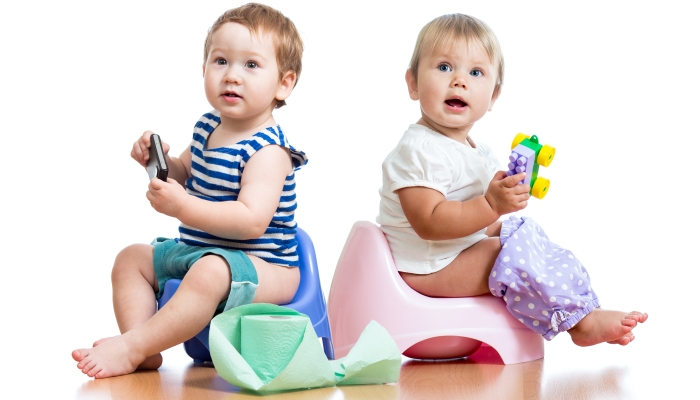
This post may contain affiliate links; please see our terms of use for details.
- Begin potty training only when your child shows signs of readiness
- Remember that most boys are ready to potty train at a slightly later age than most girls
- Potty training a boy is different from potty training a girl, but that doesn’t mean it’s more difficult
Potty training is a big milestone in your child’s development. Toilet training does have its challenges, both for girls and boys. Experts and books that claim your child can be “potty trained in a day” or “totally dry in three days” may make parents feel like they’re doing something wrong if their child doesn’t achieve potty training success quickly and easily by two years old.
The most important thing to remember is that every child is an individual and that not all toilet training methods will work for each child. When it comes to boys and toilet training, it’s helpful to know that they often achieve this developmental turning point a little later than girls and that they have different skills to learn.
Below are some strategies that should make potty training your little boy a rewarding experience for him and for you.
Is My Son Ready to Be Potty Trained?
This is the most important question you should ask yourself before you decide to begin potty training your little boy. A few indicators will tell you whether your son is developmentally ready to potty train or whether he might need a bit more time.
Age
Parents often think a child’s age defines when toilet training should start. It helps to know that there is actually a wide age range among potty training children. According to the American Family Physician Journal, most American children reach physical, cognitive, and emotional readiness for toilet training between 18 and 30 months of age.
That’s a big difference in potty training ages and it means your son has a lot of time to reach readiness.
The Academy of Pediatrics American Guide to Toilet Training says that girls are generally ready to potty train at an earlier age than boys. It also says that while many children may show signs of readiness at 18 months, they may not actually be ready to train until 24 months.
In fact, most children may not be totally dry during the day until 30 to 36 months, with the average age for potty training starting at 27 months. Mastery of bowel movements using the toilet may not happen for many children until well into their fourth year.
Potty training children with special cognitive or physical needs, depending on their development, may need to wait until age five or later. Some children may always need support with using the toilet. But as for any other child, signs of readiness for potty training are more important than age in determining when to start. It is important to approach toilet training for your special needs child with the help of your pediatrician and other support professionals.
Other Signs of Readiness
Signs from your little guy that he is ready to potty train are more important than the age at which you start. Starting too early when your child is not ready or doesn’t understand the entire process may result in a more challenging, difficult, and longer potty training experience.
It’s especially important to consider signs of readiness if you are potty training a stubborn toddler who may be resistant to any mention of potty time.
The American Academy of Pediatrics (AAP) says the first basic signs that your child is ready to begin potty training are:
- Your child can sit, walk and dress (mostly) independently
- He can understand instructions and respond to them
- He can communicate the need to go
- He can imitate others
Once your little boy is doing all the above, some other signs to watch for that will let you know he is ready to start potty training are:
- He has dry diapers for at least two hours during the day or after naps
- He is curious about the toilet and follows you to the bathroom to copy what you do
- He asks to have his diaper changed or is uncomfortable with dirty diapers
- He asks about big boy underwear and sitting on the potty
- He is eager for your praise around the potty
- He has bowel movements at regular times
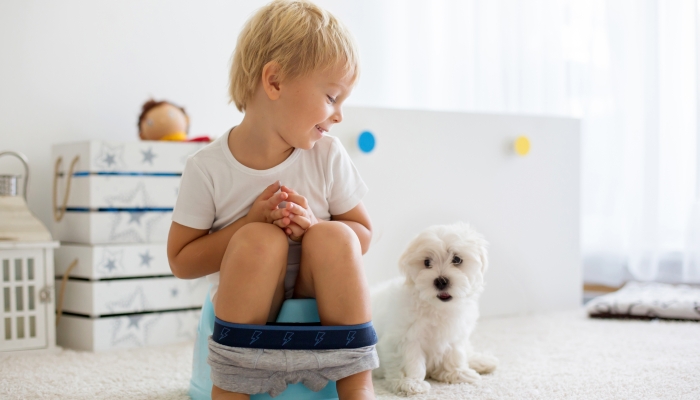
How Long Does It Take to Potty Train Boys?
Potty training girls doesn’t take less time than it does for little boys, although girls may be ready for potty training sooner. Remember that the length of time it takes to potty train will be different for every child.
There are many potty training methods parents can consider, but not every method will work for every child. Some kids may respond well to quick intensive methods like three-day potty training, but other kids may need a lot longer to get the hang of using the regular toilet.
In general, once you begin potty training with a child who is ready, it will take a few weeks to a few months of consistent work until they’re fully toilet trained during the day. Potty training at night may take much longer. Some children may not be dry through the night until they’re four or five years old, sometimes even older.
Tips for Potty Training Boys
So you’ve decided that your little guy is ready to start potty training — now what? Should he pee sitting or standing? Should you buy him a potty chair, a training seat, or a potty urinal? And will your bathroom floor ever be clean again?
Don’t panic! Remember that the best potty training tips are to remain consistent and to use positive reinforcement to build your little boy’s confidence as he learns this new life skill. Everything will fall into place when your child is ready. You and your son can embark on some potty training fun using the following tips for boys to help your little guy become a big kid:
1) Start by Sitting Down
It’s easier for boys to master the basics of potty training by sitting down first. Have your son sit on the potty both to urinate and for bowel movements. Once he has understood the physical signals for needing the toilet and how to use the potty, he can transition to learning to pee standing up.
2) Transition to Standing
Once your son has mastered peeing while sitting down, you can start to help him learn to do it standing up. Potty urinals are a tool you can use to help your boy with standing to pee, especially if he isn’t tall enough yet to reach the toilet.
Little boys who urinate while standing will need to be reminded to sit down for bowel movements every day. There are a lot of mechanics for little boys to remember around the toilet. In the excitement of learning to pee standing up, they may forget about what to do for number two. To prevent constipation, make time for them to sit down every day on the potty as well.
3) Target Practice
Whether sitting or standing, boys need to understand that they should hold their penis when they urinate. If your boy is sitting, instruct him to make sure his penis is pointing down into the potty. Once your boy starts standing, make sure he knows to point his penis down into the potty or the toilet.
To help your boy remember that urine needs to be in the toilet and not all over the floor, try putting a few pieces of cereal in the toilet bowl for him to aim at. You can also add blue food coloring to the toilet water and he can watch it change to green if he aims correctly. Tricks like these make potty training fun as well as reinforce what you’re trying to teach him.
4) Model Behavior
Get dad or an older brother involved to help demonstrate what a little boy needs to do. This is especially helpful if it’s mom or a female caregiver who is doing most of the potty training.
My sons are two years apart in age and I credit my older son with potty training his brother just by his example. He learned more from his older brother in the toilet department than he did from me as his mom. Involving siblings can really help the potty training process.
5) The Mess Factor
You will often hear parents of boys complain about the mess that boys can make in the family bathroom. Missing the toilet and hitting the floor or the wall is, unfortunately, an inevitable part of potty training boys. A urine guard for your toilet is an inexpensive way to remedy the problem at home.
But to avoid messes on the bathroom floor at home or in public, it’s important to remind your child of what he is doing every time he uses the toilet, especially when you begin potty training.
Little boys can be distracted by all the things they have to remember when potty training – getting to the toilet, pulling down their pants, pulling down underwear – sometimes they can forget to aim at the toilet, especially if they have gotten to the bathroom just in the nick of time and avoided an accident.
Every time your child goes to the bathroom, remind him to:
- Stand close to the toilet
- Aim for the water in the bowl
- Pull up his pants
- Wash his hands
On those occasions when he will miss – and he will – point out the mess to him calmly and without judgment. Keep a roll of paper towels handy in the bathroom. Explain that missing the toilet is not a big deal and that it’s part of learning. Then ask him to help you clean up. (Note: he can use just the paper towels and water to help. Household cleaners should not be within his reach.)
This is not meant to make your child feel bad about not getting potty training right. Rather, it helps your little guy connect the dots about why you’re potty training him and why we use the toilet. It shows him that there is nothing “gross” or “yucky” about his bodily functions. It also teaches him to be considerate of other family members who use the bathroom. Remember to wash your hands together afterward.
6) Praise, Praise, Praise!
Although there are a multitude of potty training methods, books, and expert opinions for parents to consider, one thing they all have in common is the use of positive reinforcement and praise. Potty training is a time to build your child’s confidence as they make a big life transition and learn an important skill.
Every time your child has a potty training success, it is important to reward them with praise and let them know how proud you are of them. Some parents like to use potty training charts or other potty training rewards.
When your child has accidents – which will be inevitable – it’s important not to scold or show anger. Potty training is a process of trial and error and there is no shame in making mistakes. Rather, help them understand what happened and reassure them that they are doing a great job with their learning.
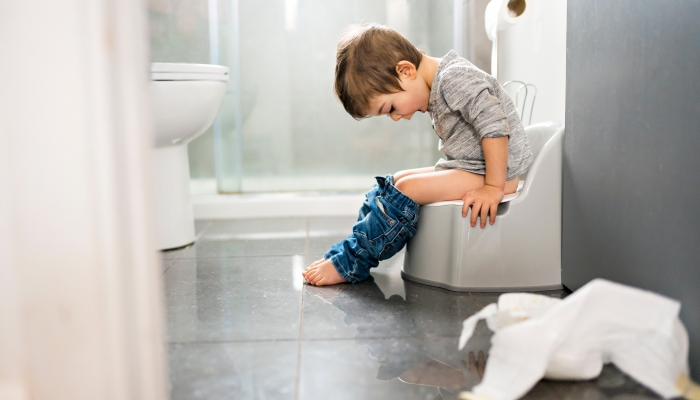
FAQs
Should boys learn to use the potty sitting down?
When you begin potty training a little boy, it is usually easier for him to start by sitting down first and then gradually moving to stand up. Boys will begin standing up once they understand more about using the potty. They will also begin standing up to model the behavior of dad or any older brothers. When they have reached that stage, you might like to try a potty urinal.
Do potty training boys need to wear pull-ups during the day or at night?
Many parents of both girls and boys choose to use pull-ups or disposable training pants during potty training. They find pull-ups easier for children to maneuver than diapers when they are learning and easier to deal with than regular underpants when accidents happen. Remember that nighttime potty training usually takes much longer. Most children can stay dry at night between the ages of five and seven. You can expect your child to need pull-ups or diapers at night for some time even after they may have mastered daytime potty training.
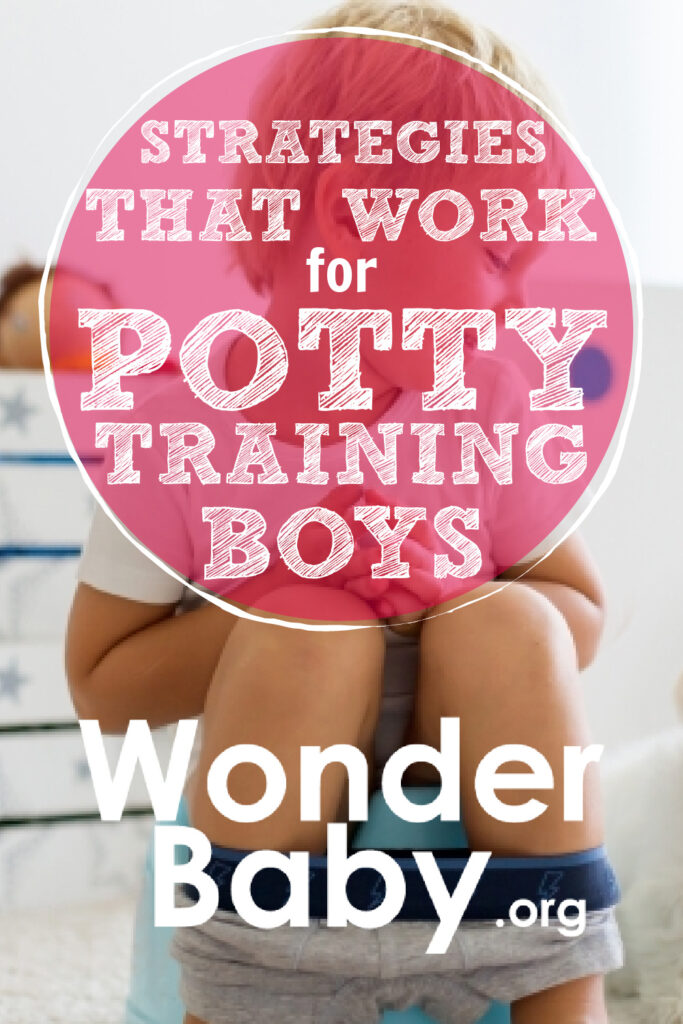
Related Posts
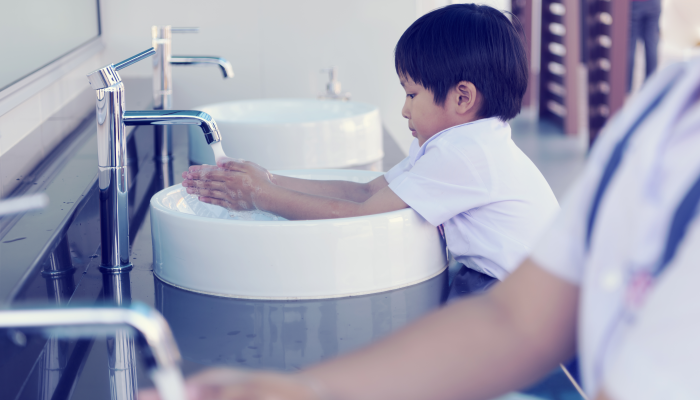
IEPs, Potty Training
7 Sample Toileting IEP Goals
Toileting IEP goals should address the specific needs and abilities of each child. Be flexible and patient as your child works on their toileting skills.
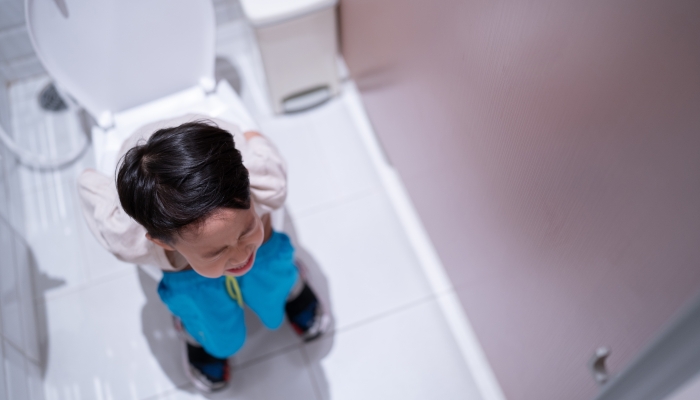
Potty Training
How To Deal With Constipation When Potty Training
Constipation is common amongst children of potty training age. Many children suffer from potty training constipation, but there are things you can do to help.
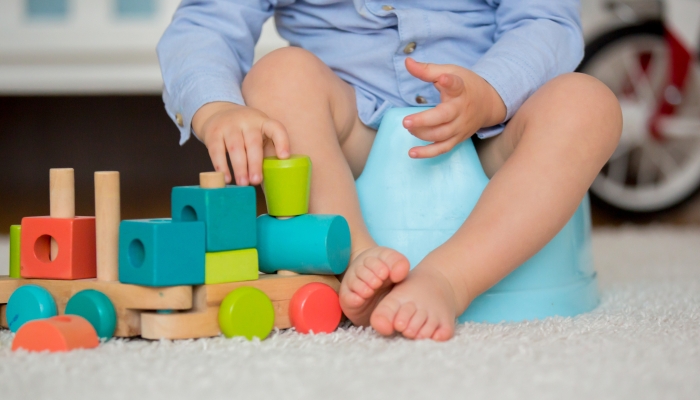
Potty Training
5 Potty Training Games To Make Potty Training Fun
Learning to use the toilet doesn’t have to feel like hard work. There are lots of potty training games you can play with your toddler to make learning fun.